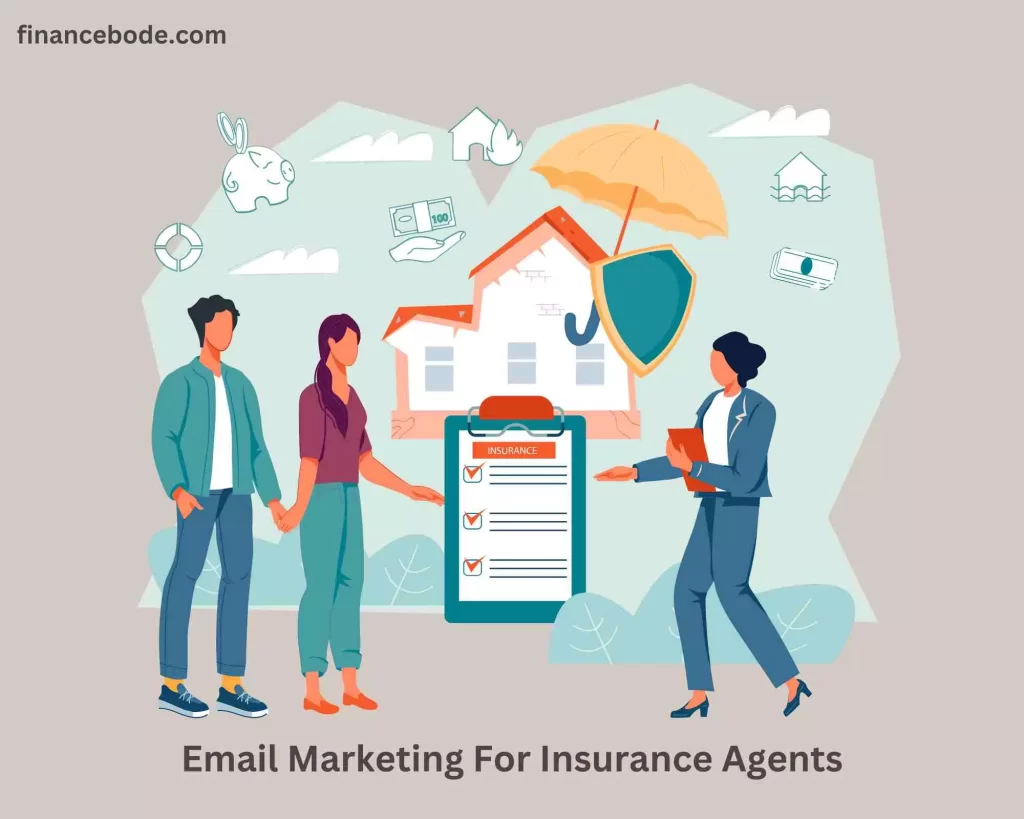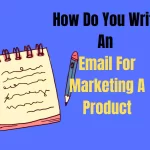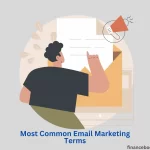You may have attempted email marketing for insurance agents but didn’t get the results you wanted. Email marketing is a powerful channel for insurance agents to connect with their audience, nurture leads, and drive conversions.
In this article, I will give you thorough knowledge regarding email marketing for insurance agents, exploring its benefits, best practices, and proven strategies for success.
Keep reading to learn the best email marketing practice for insurance agents.
See also: The best colors to use for your emails.
What Is Email Marketing For Insurance Agents?
Email marketing for insurance agents refers to the use of email to advertise insurance goods and services to new and current consumers.
Insurance agents may utilize email marketing to contact clients and prospects, create connections, and generate leads.
Creating and sending customized emails to a list of subscribers who have chosen to receive marketing messages from the company or insurance agent is a common component of email marketing campaigns.
These emails may feature a range of information, such as promotions, instructional resources, and insurance product and service updates.
Insurance agents may utilize email marketing to cultivate connections with clients and prospects over time by continuously offering good information and entertaining material.
Agencies can create trust with their audience and enhance future sales.
See also: How to build relationships with clients via email.
Email marketing for insurance brokers can also be used to monitor and assess marketing performance by evaluating open email rates, click-through rates, and other analytics.
Agencies can better understand their audience’s tastes and behavior and change their marketing tactics appropriately.
See also: 10 Best Numbers Marketing Software Platforms for Business Today
Benefits Of Email Marketing For The Insurance Industry
Email marketing may provide a variety of advantages to insurance firms and brokers working in the insurance sector. Here are several significant advantages:
Cost efficient:
One of the most affordable marketing channels is email marketing. Compared to conventional types of marketing like direct mail, email marketing is often less costly and may yield a larger return on investment.
Increase engagement:
Email marketing can help insurance agents communicate more personally with their clients and prospects.
By delivering relevant and quality material, insurance agents may create trust and position themselves as thought leaders in their field.
Enhance customer retention:
Email marketing can help insurance firms enhance client retention by notifying consumers about new goods and services, changes, and adjusting their rules.
Personalization
It may be incredibly simple to turn insurance prospects and customers off by sending them blanket emails that are generic and intended for a general audience rather than being personalized to their circumstances or wants.
Personalized emails sent to a segmented insurance email marketing list may catch their attention and connect considerably better with their demands.
Read more: How to personalize email.
Measurable Result
Email marketing includes extensive data and analytics that may help insurance businesses and agencies monitor and quantify the effectiveness of their efforts. This helps them to make data-driven choices and refine their strategy for better outcomes.
Email marketing is a potent tool for insurance companies and agents looking to connect with their clients, build relationships, and grow their businesses.
Read more: bulk email marketing.
How To Write Marketing Email For the Insurance Industry
Before you start email marketing for your insurance business, the most crucial thing to remember is to know how to write a marketing email that stands out in your client’s inbox.
Here are how to write email marketing for insurance agents:
Plan Engaging Email Content
Once you have created a quality email list (See how to create a quality email list HERE.), the next step is to plan intriguing and engaging email content that connects your readers.
Everything in this world starts with a solid plan. Planning the structure of your email content should always be your first step.
Writing attention-grabbing topic lines
The first thing readers see about your email is the subject line. Write subject lines that are brief, intriguing, and creative inquiry.
To develop a decent subject line that encourages people to open your email, you need to bear in mind the following:
- “Hitting hard” on pain spots, topics that users worry about.
- Highlight essential information: promotions, discounts, gifts…
- The title should be concise, concentrating on the theme you wish to express.
- Always generate a separate email subject line after each send.
Experiment with personalization, humor, or urgency to attract recipients to read your emails.
Read more: How to write attention-grabbing subject lines.
Providing helpful and relevant information
You should know clients only spend 1 minute skimming through the emails in their inbox – and only when your email is very relevant and helpful will they spend additional time to learn.
Therefore, the way to write effective Email Marketing is to classify each problem with its goal of building the first marketing message and then the main content.
For example, You are going to introduce a new service => that is the most crucial message. Based on this, you can give information about other services or interesting news in other portions of the email.
Your email content should deliver value to your subscribers. Share informative articles, recommendations, or industry updates that target their trouble areas and give answers.
Incorporating visual elements
Suppose you produce Email Marketing with the goal of introducing and promoting new services. In that case, you should attach relevant and well-designed photos that will generate a powerful impression and make clients trust your brand. Your career more.
However, do not include too many images that will influence the pace of email loading.
This will cause clients to lose patience and not read the email. To produce successful Email Marketing, you should use 1-2 photos for each email.
Personalizing the message
A personalized email copy will perform better than a “generic” email copy.
Therefore, you should put the customer’s name in the email subject line to let the user know your appreciation and that you acknowledge them. This will inspire them to open the email to see what’s inside.
To avoid being “in the middle” of other emails, you should be sure to thoroughly customize your emails and set them distinct from your rivals’ emails.
Including unambiguous calls-to-action (CTAs)
CTA is a Call to Action Button – Every email should contain a clear and appealing call to action that guides recipients toward the intended action.
Whether it’s urging people to book a consultation, seek a quotation, or download a resource, make your CTAs noticeable and appealing.
An appealing CTA button design can persuade consumers to click and enhance sales conversion rates.
Here are a few essential strategies to help you develop a beautiful CTA button such as:
- Use short, forceful driving phrases such as: “now,” “get now,” “register now,” “watch now”,…
- New design, yet eye-catching.
- Striking colors.
- Visible location: Center, right, or below the email.
- The size should be 1-2 pixels greater than the text size.
- Do not use too many CTA buttons will make customers feel “suffocated.”
Read more: How to design email CTA to increase conversion.
Remember, compelling email content is a combination of originality, relevancy, and knowing your audience’s demands. Test and tweak your email content to boost open rates, click-through rates, and conversions.
Email Marketing Tips For Insurance Agents
If you’re putting up an email marketing campaign for the insurance business, there are some pieces of advice you should constantly keep in mind. Consider following these tips:
Increases the amount of trust
Right or wrong. People’s perception of insurance is frequently a huge barrier for insurance agents. They are considered “shark jaws” that are continually seeking to extract money from clients. This is a frequent challenge that insurance firms encounter.
Focus on acquiring the recipient’s confidence. You should display information so buyers perceive that the product is designed to serve them, not cheat them.
Sell without having to sell
You should avoid sales in general if you want to create a long-term connection with your consumers. And concentrate on addressing topics linked to what your audience desires.
For example, a ski trip insurance firm may discuss ski methods or wonderful ski spots.
Quality Content
The content quality is important. Email marketers must comprehend or, ideally, have experience working in insurance. Give distinct, concise core concepts.
Copying advertising text on the internet is something many people do. However, it needs to convey your impression and stick out to buyers. Change them appropriately.
Monitoring and checking
This is vital in every email marketing strategy. Make sure you constantly monitor your email open and click rate data.
Then, depending on these measurements, there should be a modification in the title, design temp, and creative content in each mass email campaign.
With data, you will have a foundation for estimating campaign performance, unable to establish which channels bring in prospective clients who are truly interested in your content.
Maintenance, not simply new sales
Some insurance businesses exclusively employ email marketing campaigns to sell new goods and services but overlook promotions and customer care appreciation programs.
This is clearly a major error. Did you know 30% of a business’s income originates from past clients? And because the insurance business relies on trust and prestige, this is more true than ever for that sector.
Brands should concentrate on preserving and growing connections with current consumers. This may enhance satisfaction rates. They may even share with others their wonderful experiences.
Read more: How to use email marketing to support customer service.
Design beautiful templates
An essential component of insurance business email marketing template design is that it has to operate on all devices. Smartphone users currently account for the bulk of their mailbox access.
So you need to consider email templates that appear effectively on all platforms. Also, remember to ensure that all navigation links are functioning properly. If a user clicks on a faulty link, there’s a good probability they’ll never try again.
See also: How to design an email that gets opened.
Call to Action
The call to action is the bridge from emails to greater engagement. Therefore it has to be obvious and noticeable when employed.
Common CTAs are to drive clients to a landing page for further information. Take your time with the call to action in the purchase step.
Because users are extremely vigilant in this region, they need to find out precise details before taking further action.
Provide Social Proof:
Social proof is also a great practice that goes a long way in email marketing. Including customer testimonials, reviews, and ratings in your emails may give social proof, enhancing credibility and confidence in your company.
Offer incentives:
Include incentives, such as discounts or gifts, that may inspire members to do action, such as signing up for a policy, enhancing retention, or reducing introduction.
Stay in conformity with regulations:
Make sure your email conforms with requirements, such as the CAN-SPAM Act, by giving an opt-out option and providing a physical address. Failure to comply might harm your reputation and lead to legal penalties.
Nurture leads via a drip campaign:
Creating a drip campaign that sends out an automatic sequence of emails to nurture prospects and progress them down the sales funnel may enhance engagement, establish trust, and increase conversions.
Provide obvious unsubscribe options:
Allowing subscribers to unsubscribe from your emails easily can help you have a clean and interesting email list. Hiding the unsubscribe button might lead to reduced engagement and complaint rates.
Track Your Competitors:
Tracking what your rivals are doing with their email marketing campaigns may give insights into new methods and developing trends and help you remain ahead.
By using this Email Marketing Tip, insurance agents may enhance the success of their campaigns, boost engagement and trust with their audience, and expand their companies.
How to Grow Your Email Marketing
So, you selected the perfect email marketing solution for you, sent your first email, and have begun several campaigns. That’s wonderful!
But how can you enhance your marketing plan to be noticed and help transform those leads into deals?
You may take a few actions to enhance your emails and increase subscriber engagement. Use the following tips to improve your campaigns:
Integrate “call to action” buttons:
Add a share button to your emails to encourage users to distribute your messages, web page, or instructive blog post to friends and contacts. Then, those people could subscribe or share with someone else… and so on.
Establish a social media presence:
Get active on Facebook, Twitter, Pinterest, and other places people use. Share educational articles or advice regarding insurance and a means to subscribe to your mailing list, and you’ll hook those active on such sites.
Send tailored messages:
Retaining clients is equally as crucial as getting new ones since this establishes a reputation and leads to recommendations.
Show your subscribers they matter with emails wishing them a happy birthday and messages addressing them by name. Services with tags and personalizations will remember the information for you!
Establish a regular newsletter:
Keep your connections up-to-date on your successes and latest developments. This is the greatest opportunity to market yourself, so truly gloat about how terrific you are.
A frequent newsletter indicates you’re active and gives readers a reason to join and remain connected.
Send reminders:
Ensure your contacts remain interested and listen by setting up reminders for insurance plan renewals.
Also, send follow-up communications to prospects who have shown interest in a plan but have not made a purchase. This helps prevent leads and contacts from falling off.
Conclusion
Email marketing is a great tool for insurance agents to engage with their audience, nurture prospects, raise awareness, generate trust, improve marketing plans, and drive conversions.
By employing successful tactics such as list segmentation, personalization, relevant email content, and optimization approaches, insurance agents may enhance the effectiveness of their email marketing.
Remember to develop trust with your subscribers and establish yourself as a credible insurance agent.
With intelligent preparation, appealing content, and ongoing development, email marketing can be a significant tool in your marketing strategy.
FAQ
How frequently should insurance agents send emails to their subscribers?
The ideal frequency for sending emails to insurance subscribers should be an average of four to five times a month.
However, keep in mind that frequent contact without overloading your subscribers is typically advisable. Aim for a balance that keeps your agency top-of-mind without triggering email fatigue. T
his is because too many emails can quickly lead to subscribers becoming overwhelmed and unsubscribing.
Can insurance agents use bought email lists for their campaigns?
It is not advisable to make use of bought email list for insurance email marketing.
Purchase lists usually include old or irrelevant email addresses, which may result in significant bounce rates and ruin your sender’s reputation.
Instead, concentrate on organically creating your email list via opt-ins and compelling content to guarantee that your subscribers are interested in your insurance services.
How can insurance agents boost email open rates?
An insurance agent can boost email open rates by paying attention to the subject lines and personalization.
Craft subject lines that are fascinating, unique, and relevant to your audience. Use A/B testing to experiment with various subject line variants and find what resonates most.
Additionally, ensure you personalize every email content you send to persuade recipients to open your emails.
What types of content should insurance agents include in their emails?
Insurance agents should include informative articles, educational resources, industry news, customer success stories, risk management tips, and policy change updates. To provide value to their subscribers.
Tailor your content to address your audience’s pain points and interests, demonstrating your expertise and positioning yourself as a trusted advisor.
How can I sell more insurance plans using insurance email marketing?
The ability to predict your subscribers’ needs is the answer to that. For example, the demands of someone shopping for life insurance significantly differ from those looking for house insurance.
Your email campaigns need to be carefully tailored and segmented to deliver the correct email to the right subscriber.
Which email marketing service provider is best for insurance agents?
I prefer ActiveCampaign, though it depends on your requirements and objectives as an insurance agent.
ActiveCampaign includes the most sophisticated functionality and strong automation. But if you have a small agency and want something easy to use, I’d prefer Mailchimp instead.
Mailchimp offers a free version supporting up to 2000 contacts and is a little simpler to understand.
There are a number of terrific email marketing providers out there, but all excel in various areas. Compare our list of top services to determine which suits your organization.
How can insurance agents track the success of their email campaigns?
Insurance agents can track the success of their email campaigns through various metrics, including open rates, click-through rates, conversion rates, and unsubscribe rates.
Agents can gain insights into the effectiveness of their campaigns and make data-driven optimization decisions by monitoring these metrics.





